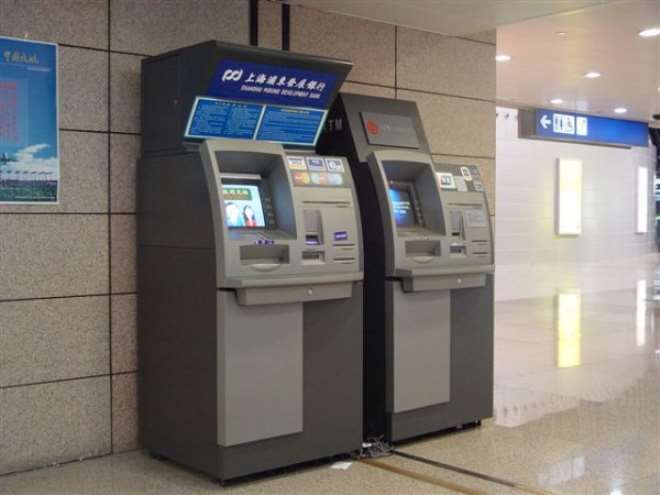How To Protect Your ATM Card Against Phishing
As electronic payment culture gradually gains traction in the country, so also is e-payment fraud on the rise.
“That is the reason consumers have more responsibility to safeguard their details from phishing and social engineering attackers”, says Mr Dipo
Fatokun, the Director of Banking and Payments System Department of the Central Bank of Nigeria (CBN).
The most common among the e-payment frauds worldwide now is Phishing.
Phishing, according to Wikipedia, an online dictionary, “is the attempt to obtain sensitive information such as usernames, passwords and credit card details( and sometimes, indirectly money) often for malicious reasons, by masquerading as a trustworthy entity in an electronic communication”
The most common method now by these fraudsters is text message to their unsuspecting victims to update their Bank Verfication Number (BVN).
“When somebody sent a text message to you like this: Dear customer, your ATM card has been disabled because your BVN is not complete, please do not respond”, warns Fatokun.
“It may, however, interest you to know that some people have received such text messages and responded, and then lost millions. Most of the frauds that we have witnessed, currently ongoing, is due to lack of knowledge; due to what I would call gullibility.
“People would not ordinarily put their wallets on the table, even it is N1,000 that is there, because it is valuable to them. But people would put their ATM card on the table because they don't believe that the card is as valuable as the wallet. The wallet contains N1,000ß and the card contains bank account where you have N50,000 or more. Many people have fallen victim because of lack of knowledge.We have that responsibility as account holders to ensure that we maintain confidentiality. Under no circumstance should we disclose the details of your bank accounts; the details of your ATM card. Do not give details.Your bank already has the details.Your banks can not be asking you to give details,” he added.
According to an online platform, Bankrate.com finance/saving, ATMs are under siege now more than ever from skimming. “Skimming, where ATM thieves steal your PIN and account number, using remote devices, is increasing dramatically. Often done by sophisticated crime rings from the Eastern bloc countries, ATM skimming is becoming a high-tech art that's hard to detect. That's bad news for consumers. Experts say that losses from skimming are approaching $1 billion. Nearly one in five fraud victims reported having their credit card PIN or debit card ATM PIN information stolen”.
Quoting Robert Vamosi, an analyst handling risk, fraud and security at Javelin Strategy & Research., Bankrate sees ATM skimming continuing to rise.
“Consumers aren't aware of ATM tampering,” he says. “ATMs have 40 years of trust.”
Skimming isn't new. It's been around for at least 10 years. What has changed is that the “technology of the bad guy is getting better and better every year,” says Robert Siciliano, a security expert based in Boston. “It's up to consumers to watch their own backs.”
Typically, ATM thieves use two devices to capture your PIN and card data. One device sits near where you swipe your card and reads the magnetic stripe on your card with your account number. Even more confusing, the device mimics the card slot. “The technology has evolved to a point where the molded plastic fits like it belongs there,” says Siciliano. Devices are even readily available over the Internet for as little as $300.
A camera, hidden from view, captures the PIN. “You can get the data in real time,” says Siciliano. “You can be in your car with a laptop remotely accessing the device.”
Thieves then burn the data onto a blank card to access your money.
Experts add that debit card users are most at risk. Siciliano adds that thieves carefully orchestrate ATM withdrawals, maxing out cash withdrawals one day and waiting until after midnight for the next stash, which quickly adds up.
However, here are some tips to help you protect your account:
Number one, cover your password with your hand, while accessing ATM .Hidden cameras are disguised so they can pick up your password. By protecting it, ATM thieves can't access your account.
Two, use familiar ATMs and limit your visits. ATMs in dimly lighted spots or used late at night could be more susceptible to fraud, while ATMs under video surveillance can be safer. 'Stay away from ATMs at retail stores or restaurants,' adds Siciliano. Recently, skimming devices were found on ATMs in a popular grocery store in central Florida.
Airports, convenience stores or kiosks are equally vulnerable to ATM thieves.
Still, even highly trafficked ATMs outside a bank branch have been targeted by thieves.
Also, try to limit your visits to the ATM. “With frequency, there's risk,” says Siciliano.
Check bank balances frequently
Observe the ATM
Vamosi cautions consumers to look at an ATM to make sure a card slot is “legitimate and not tacked on.” Look for things that strike you, he says. “Some people have felt that when they inserted their card, something went awry,” he says. In that case, try another ATM.
When protecting your account against ATM thieves, “it's all about awareness, paying attention and understanding risks,” says Sicilano. “There are many ATMs and every one of them is susceptible to fraud. The speed and convenience of technology has replaced the security of technology.”
Source: Sun
Latest News
-
 "If You're For Me, I Am For You" - Cubana Chief P
"If You're For Me, I Am For You" - Cubana Chief P -
 "3 Days To Go" - Femi Adebayo Urges Fans To Get S
"3 Days To Go" - Femi Adebayo Urges Fans To Get S -
 "Stop Asking Me Questions About Speed Darlington"
"Stop Asking Me Questions About Speed Darlington" -
 "Benue Is The Most Underdeveloped State I've Ever
"Benue Is The Most Underdeveloped State I've Ever -
 Stan Alieke Urges Young Professionals To Take Lin
Stan Alieke Urges Young Professionals To Take Lin -
 Chizzy Alichi Teases Fans With Baby Reveal, Promot
Chizzy Alichi Teases Fans With Baby Reveal, Promot -
 "I'm Not Wearing Makeup From July 4th Till Decemb
"I'm Not Wearing Makeup From July 4th Till Decemb -
 "Stop The Challenge Of Mocking Kids With Down Syn
"Stop The Challenge Of Mocking Kids With Down Syn -
 Regina Daniels Celebrates Sons As They Mark Birthd
Regina Daniels Celebrates Sons As They Mark Birthd -
 Speed Darlington Threatens To Sue NAPTIP For Defam
Speed Darlington Threatens To Sue NAPTIP For Defam














